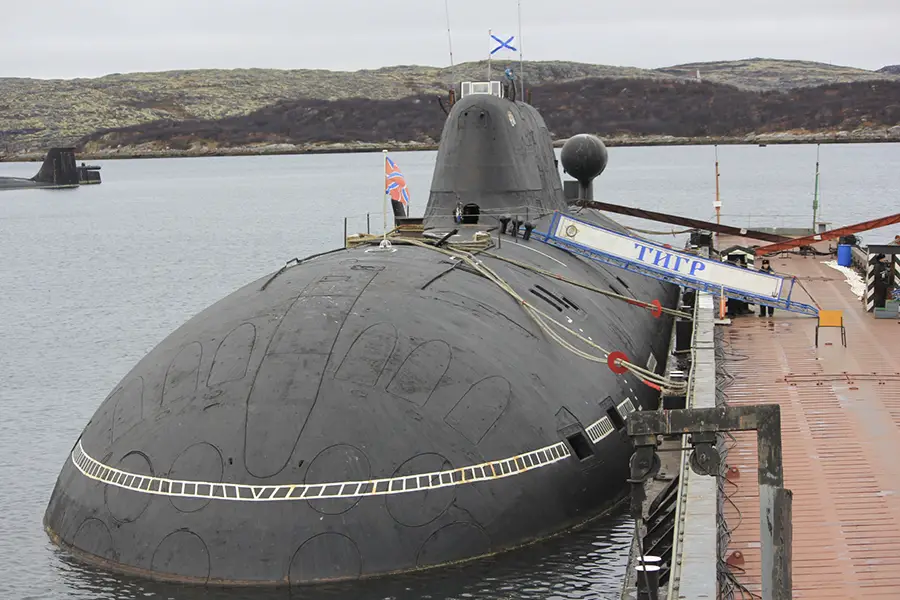Russia’s Project 971 ‘Shchuka-B’ (NATO reporting name: Akula) nuclear-powered submarine, the Tigr, will be armed with a Kalibr-PL cruise missile system when its modernization is completed in 2023. The Tigr’s repairs were scheduled for completion this year. Russian state news agency TASS reported that the submarine arrived to the Nerpa plant (a subsidiary of the Zvezdochka shipyard, part of the United Shipbuilding Corporation) in 2019. Five Project 971 submarines are undergoing modernization and repairs at Zvezdocka and its production facilities. The Northern Fleet’s 24th division of submarine forces includes six nuclear-powered subs: the Leopard, the Vepr, the Tigr, the Pantera, the Gepard and the Volk. Project 971 nuclear-powered submarines have been developed by the St. Petersburg-based Malakhit Marine Engineering Design Bureau.
The main innovations concern the weapons and torpedo launchers will be adjusted to fire Kalibr missiles. The 3M-54 Kalibr (NATO reporting name SS-N-27 Sizzler and SS-N-30A) is a family of Russian cruise missiles developed by the Novator Design Bureau (OKB-8). There are ship-launched, submarine-launched and air-launched versions of the missile, and variants for anti-ship, anti-submarine and land attack use. The upgraded submarines will be lethally dangerous for squadrons and aircraft carrying groups. One salvo can destroy several targets at a time. The attack needs to obtain target coordinates from satellites, drones, aircraft or warships. Submarine-carried Kalibr can be armed with a penetrating high-explosive warhead of 450 kg. The firing range is close to 1500 km. Kalibr cruise missile were engaged in Syria and operated as a precision and faultless weapon.

Project 971 has a double-hull design. The robust body is made of high quality alloy steel with ?? = 1 GPa (10,000 kgf / cm2). To simplify the installation of equipment, the boat was designed using zonal blocks, which made it possible to transfer a significant amount of work from the cramped conditions of the sub’s compartments directly to the workshop. After completion of the installation, the zonal unit is “rolled” into the hull of the boat and connected to the main cables and pipelines of the ship’s systems. A two-stage damping system is used: all mechanisms are placed on damped foundations, in addition, each zone unit is isolated from the body by rubber-cord pneumatic shock absorbers. In addition to reducing the overall noise level of nuclear submarines, such a scheme can reduce the impact of underwater explosions on equipment and crew.
The boat has a developed vertical tail unit with a streamlined boule, in which the towed antenna is located. Also on the submarine are two reclining thrusters and retractable bow horizontal rudders with flaps. A feature of the project is the smoothly mated connection of the tail unit to the hull. This is done to reduce noise-generating hydrodynamic eddies. Power supply is carried out by a nuclear power plant. The lead boat, K-284 Akula, is equipped with an OK-650M.01 pressurized water-cooled nuclear reactor. On later orders, the AEU has minor improvements. Some sources report that subsequent boats are equipped with OK-9VM reactors. The thermal power of the reactor is 190 MW, the shaft power is 50,000 liters. with. Two auxiliary electric motors in the hinged outboard columns have a capacity of 410 hp. with., there is one diesel generator ASDG-1000.












